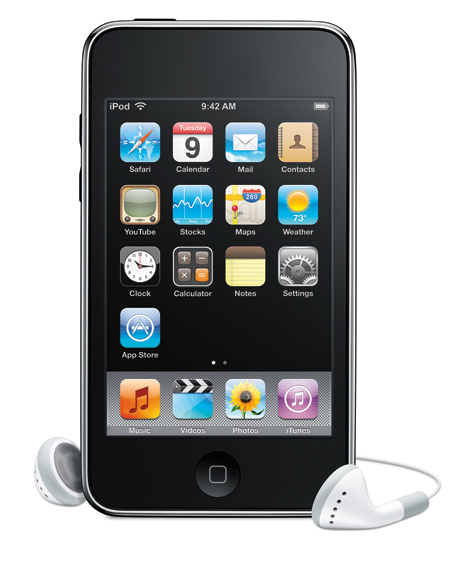
There’s been a fair bit of criticism of the printing industry from this column of late. Blame it on the winter weather if you like, or a vitamin deficiency incurred from PacPrint 09 after a week of eating nothing but chicken burgers probably left over from PacPrint 05.
Sadly, I haven’t yet got around to discussing my newfound appreciation for print and the role it plays in the modern world. Truth be told, it’s easy to ignore print. For most people, “print” is that thing you hit after save and spell-check, and prior to joining the ProPrint team I was no exception.
I’ve since come to the conclusion that printing’s a bit like oxygen: you wouldn’t notice it until it wasn’t there. It’s a simple oversight for the modern consumer to forget about how often they use a printed product and how it goes beyond just books, magazines and newspapers — the box they get their cereal from, the warning stickers on the doors of their train, the corflute informing them that buses will be replacing their train, the timetable their train occasionally adheres to…
Equally, you can idly sit at a set of traffic lights without noticing the shape and design of those lights, without thinking that there must be a company (and indeed, several companies) that specialises in the manufacture of traffic lights, that these companies will compete with each other for the right to manufacture a government’s traffic lights, and indeed that there may be a news publication that caters to this industry (ProLight, if you will).
In short, I get it now. So believe me when I say that I’m not just using the ProPrint pulpit to rain scorn on an industry facing some challenges. Rather, the role of this column is to challenge the mentality that if we ignore the threat of digital and internet technologies and keep going about our business, everything will be okay. This column is the brash, young firebrand who doesn’t care whom he offends when he says that printing is on the way out, so what are you going to do about it? This column is intended to provoke a genuine reaction in order to provoke some form of genuine action.
Also, this column is written in an office dominated by IT publications which celebrate technologies that seek to make print redundant. Last year it was the iPhone 3G, which – in addition to its less publicised functions as a phone – made portable web browsing pocket-sized and mainstream. This year’s big threat, Amazon’s 3rd generation Kindle – widely regarded to be the first e-reader worth a damn – is another technology we cannot afford to ignore.
The speed at which these devices become ubiquitous cannot be overstated. Anyone care to hazard a guess when the first iPod was released? Considering their omnipotence, you’d be forgiven for thinking it was earlier than late-2001. And this, bear in mind, was the first generation iPod: an unsightly 5GB monstrosity hefty enough to bludgeon an elephant to death. Indeed, the iPod evolved so quickly that the original model was in 2007 rebadged as the “classic”. When an invention from only six years ago suddenly acquires vintage status, there’s little wonder people see print as old-fashioned.
So too, people are excited by digital and internet technologies because of their potential: not so much the benefits they offer now but the possibilities for five, ten, or 20 years down the track. The iPod begat the iPhone in just six years; what the e-reader could lead to is subject to rather exciting speculation (in this column’s opinion, the two devices will very soon be combined).
Movable type, on the other hand, has had a 600-year head start, and consequently doesn’t have much room to grow. Correct me if I’m wrong, but I’d say the process of print has more or less been perfected; now we’re just tweaking it slightly.
Being on the floor at PacPrint 09 seemed to confirm my theory that we’re still doing the same thing, we’re just doing it better now, as the technological gains made since PacPrint 05 seemed to be minimal. Most vendors would probably agree that printing isn’t reinvented with each new kit update, just marginally improved. Production rates increase, paper becomes more environmentally friendly, and colour standards are redefined, but in the end, print is print.
Indeed, the biggest growth area that I could discern at PacPrint 09 was in the area of workflow software (or ‘workflow solutions’, as countless marketing departments seem to prefer). This is perhaps the new area where vendors can distinguish themselves, and wouldn’t you know it, it’s an IT product.
My point is that print isn’t going to win nearly as much mainstream adulation as emerging technologies because it’s already the biggest game in town. The key to business is growth, and digital/internet technologies have the most growing to do. It’s hard to excite people with a pitch along the lines of, “You know that thing we invented 600 years ago? Well, it’s still pretty useful”.
To put it in Gen-Y terms, print is the Facebook to IT’s Twitter: Twitter gets all the attention in the media because it’s the new kid on the block and many companies believe it has the potential to change how we do business. But in the end, 120 million people use Facebook every day.
Facebook, however, hasn’t rested on its laurels. It’s continually changed and evolved and learned from Twitter. The merchants of print would be well advised to do the same.
Daniel Fitzgerald is a journalist at ProPrint.
Comment below to have your say on this story.
If you have a news story or tip-off, get in touch at editorial@sprinter.com.au.
Sign up to the Sprinter newsletter

